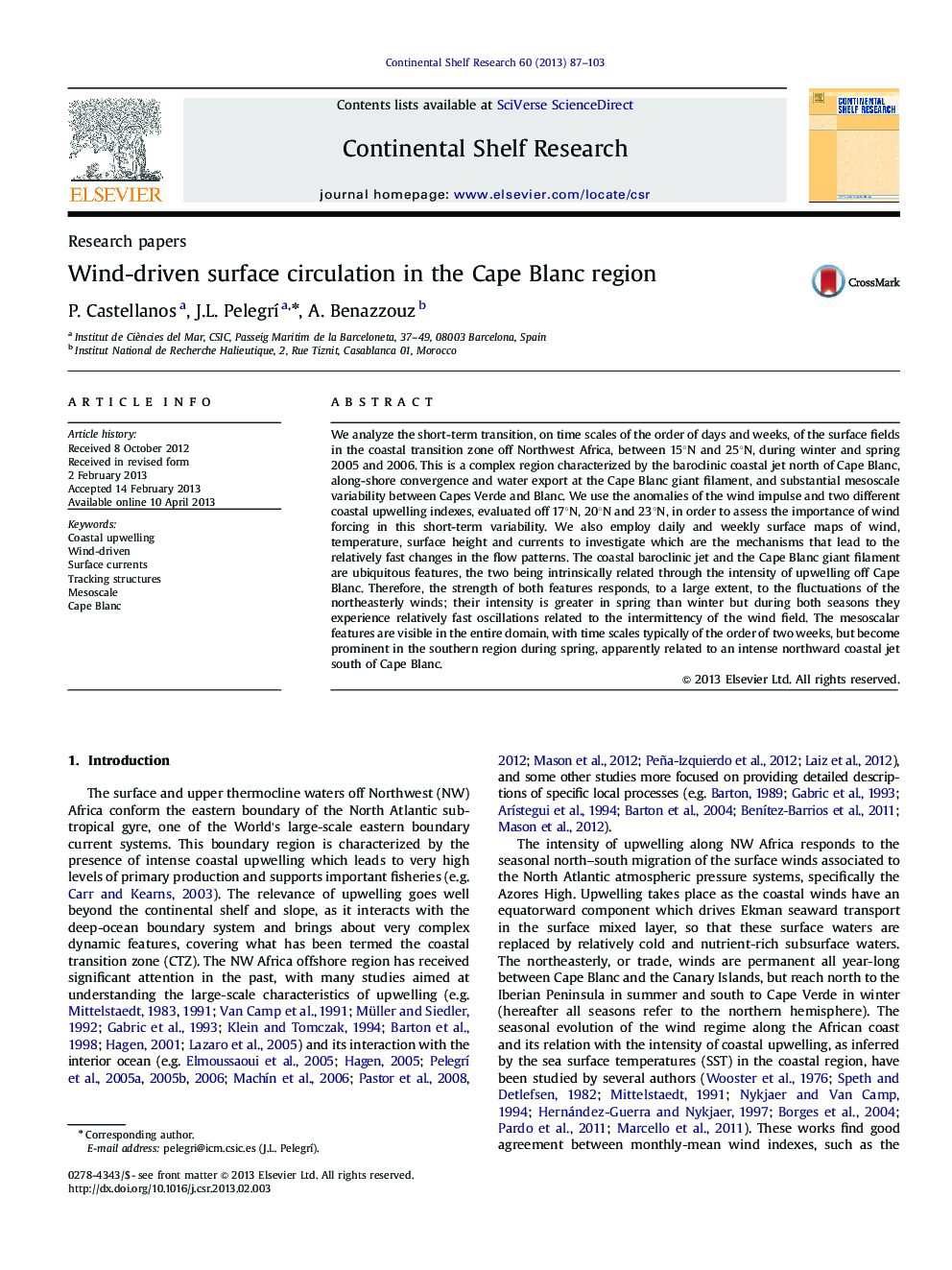| Article ID | Journal | Published Year | Pages | File Type |
|---|---|---|---|---|
| 4532070 | Continental Shelf Research | 2013 | 17 Pages |
We analyze the short-term transition, on time scales of the order of days and weeks, of the surface fields in the coastal transition zone off Northwest Africa, between 15°N and 25°N, during winter and spring 2005 and 2006. This is a complex region characterized by the baroclinic coastal jet north of Cape Blanc, along-shore convergence and water export at the Cape Blanc giant filament, and substantial mesoscale variability between Capes Verde and Blanc. We use the anomalies of the wind impulse and two different coastal upwelling indexes, evaluated off 17°N, 20°N and 23°N, in order to assess the importance of wind forcing in this short-term variability. We also employ daily and weekly surface maps of wind, temperature, surface height and currents to investigate which are the mechanisms that lead to the relatively fast changes in the flow patterns. The coastal baroclinic jet and the Cape Blanc giant filament are ubiquitous features, the two being intrinsically related through the intensity of upwelling off Cape Blanc. Therefore, the strength of both features responds, to a large extent, to the fluctuations of the northeasterly winds; their intensity is greater in spring than winter but during both seasons they experience relatively fast oscillations related to the intermittency of the wind field. The mesoscalar features are visible in the entire domain, with time scales typically of the order of two weeks, but become prominent in the southern region during spring, apparently related to an intense northward coastal jet south of Cape Blanc.
•We examine the coastal ocean responds to wind forcing.•The sea surface temperature and circulation are the strong variability at relatively short-time periods.•The Cape Blanc filament is largely driven by the along-shore convergence of the geostrophic coastal jet.
